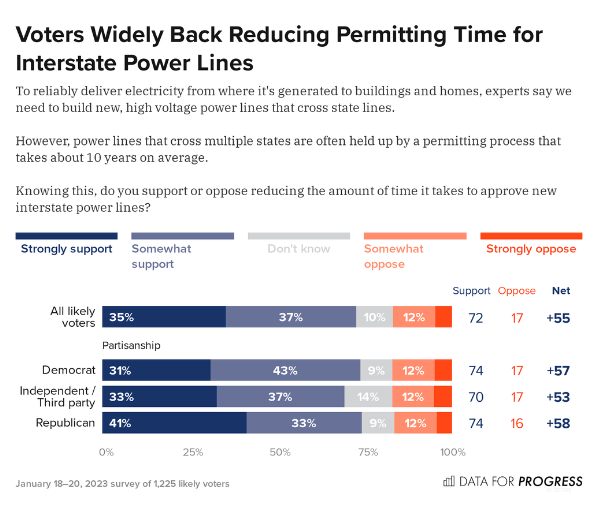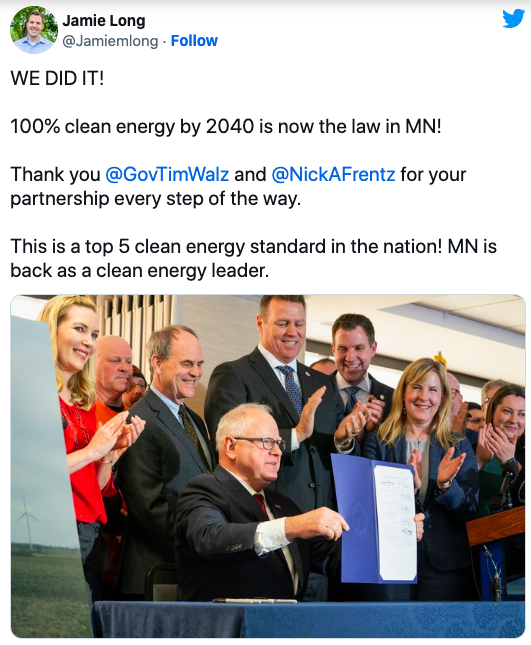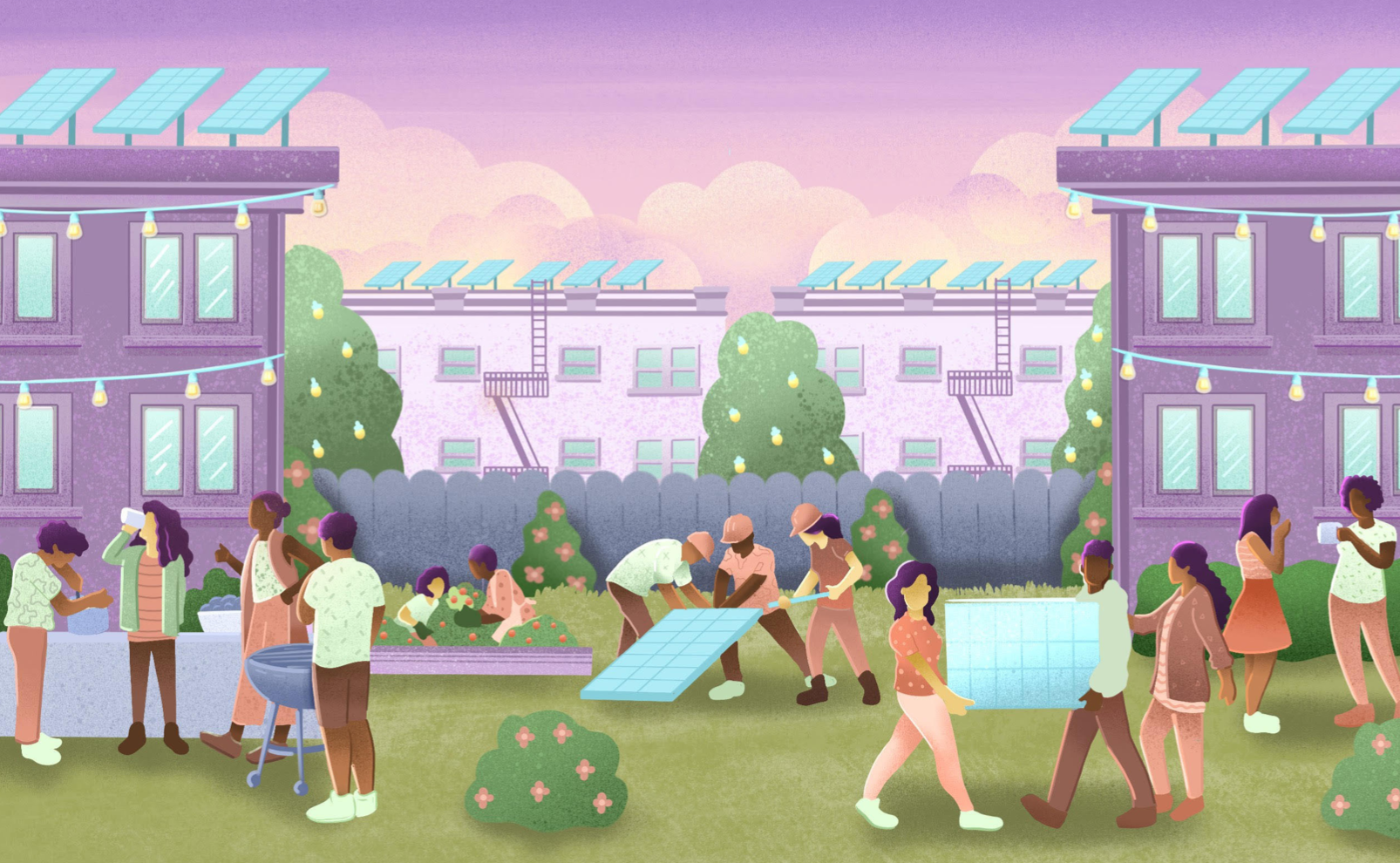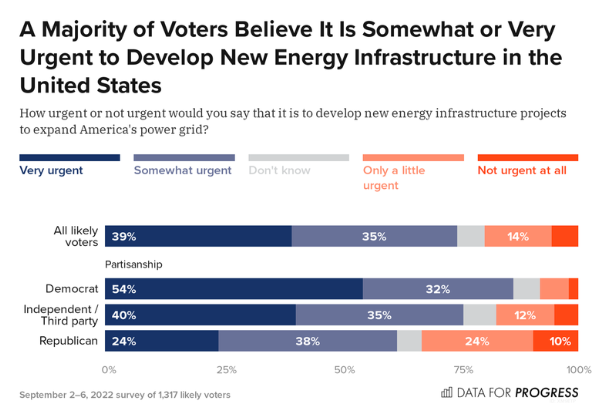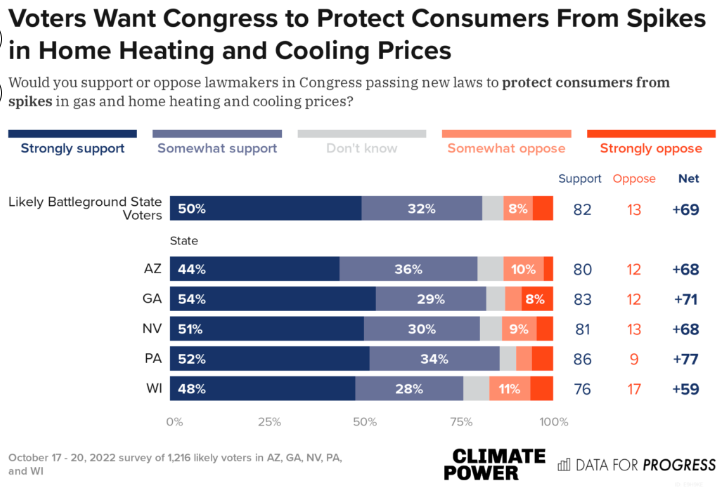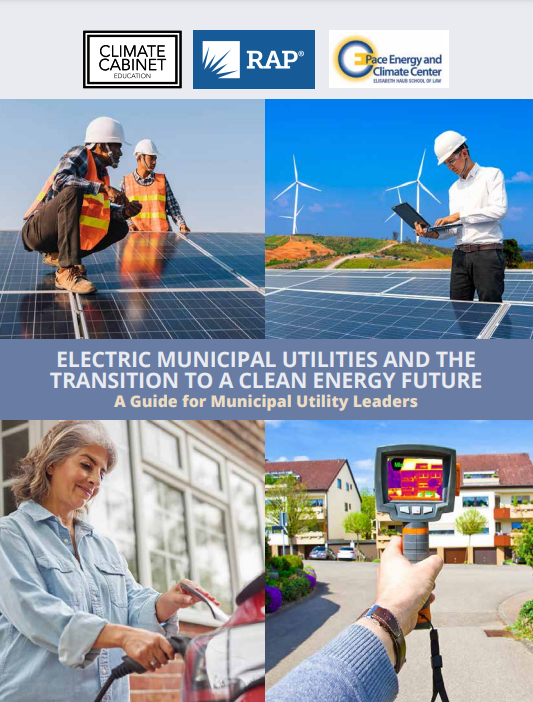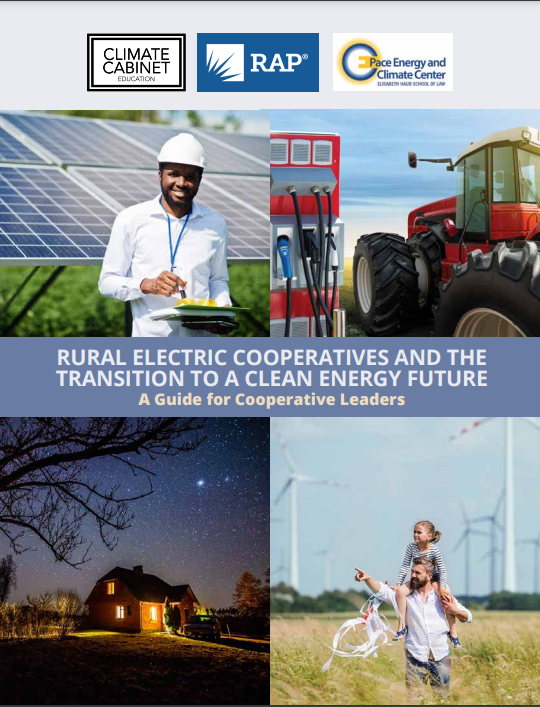Resources
Search below for resources covering the intersection of climate engagement, social science and data analytics.
RESULTS
Poll: Voters Support Building Electric Power Transmission Infrastructure
Voters overwhelmingly want to make it easier to build new power lines in the United States, but are not as enthusiastic about new fossil fuel projects. 72% of Americans support reducing the amount of time it takes to approve new interstate power lines, including 74% of Democrats and 74% of Republicans. 75% support new power lines, versus just 55% who support new fossil fuel projects.
The North Star State has a new North Star: 100 percent clean electricity by 2040. Minnesota joined 10 other states, along with the District of Columbia and Puerto Rico, in creating laws that require a transition to 100 percent carbon-free electricity—highlighting a trend of state-level action to act on climate, create local jobs, lower energy costs, and reduce deadly pollution. MN Representative Jamie Long, Majority Leader of the Minnesota House, and advocacy group Fresh Energy executive director Michael Noble played key roles in making 100 percent clean electricity the law of the land in the state. This resource includes an interview with them about the process leading to this new Minnesota policy. A big coalition of interest groups supportive of this policy was necessary for its passage. The bill passed full Democratic support and zero Republican support. The coalition included small business, families, family-supporting jobs and labor and trade unions, environmental justice groups, environmental groups, and traditional advocates for renewable energy.
A Case Study on the Founding of the Cleveland Solar Cooperative
In June 2019, the nonprofit Cleveland Owns convened The Lakewood Community Solar Fellowship, a free leadership development program focused on bringing resident-owned community solar to Lakewood, Ohio. A group of 7 residents took part, meeting for a few hours every Sunday in the basement of the local public library. The goal? Form a solar cooperative to fight climate change and build toward climate justice.
When the Fellowship started, most of these residents were strangers, but together they would go on to form the Cleveland Solar Cooperative (CSC), Ohio’s first community-owned cooperative solar developer. How did this happen?
This case study details how Cleveland Owns helped convene the Cleveland Solar Cooperative (CSC), Ohio's first community-owned cooperative solar developer. It explores how Cleveland Owns developed the foundation for energy democracy efforts in their city; the key moments, challenges, and successes they and allies faced as they formed the cooperative; and an offering of tools and resources for other communities seeking to replicate their model.
Among these resources and insights are:
- An account of Cleveland Owns' organizing principles and group norms
- An honest reflection of challenges they faced, such as developing mutual trust and the technical expertise necessary to navigate the local energy market
- The rationale behind the cooperative business model underlying the CSC
- The CSC's process of developing bylaws, governance structures, and technical infrastructure for themselves
- Their ethos of self-assessment that drives their evolution as a collective
- A tool kit of organizing materials and resources on energy democracy and solar development
Poll: Senator Whitehouse: To Unlock the Full Potential of the IRA, We Need to Make It Easier to Build Electricity Transmission Lines
Voters want to see the U.S. electric grid expanded, and widely support the SITE Act after learning about it. 74% of all voters believe it’s urgent to develop new energy infrastructure in the U.S. 74% support expediting the permitting process for power lines. 71% support the SITE Act after reading about it, which would expedite the permitting process. 55% of voter support giving the federal government more authority over interstate power lines.
Memo: Battleground Poll on Gas Price Accountability
Swing state voters overwhelmingly support policies to hold energy companies accountable for price spikes amid record oil and gas profits. 78% of battleground state voters support Congress passing new laws to “hold energy companies accountable” for spikes in gas and home heating and cooling prices that have led to record profits for those companies.
Poll: Texas Voters, Feeling the Pinch of High Home Energy Prices, Support Investments to Improve the Grid
Texas voters continue to say that the state government isn’t doing enough to protect Texas from climate change, but are confused about who to blame for the state’s energy problems. Texans who are experiencing higher home energy prices are about equally likely to say that President Biden (54%) and the Electric Reliability Council of Texas (56%), or ERCOT, deserve a “great deal” of blame for their higher energy bills. When they are informed that the Texas electricity grid is independent and therefore not subject to regulation by the federal government, however, Texas voters are 26 points more likely to say that ERCOT deserves a “great deal” of blame (65%) than President Biden (39%).
A Guide for Municipal Utility Leaders: Electric Municipal Utilities & the Transition to a Clean Energy Future
Transitioning to clean energy can create a more flexible, economic, and resilient electricity system. Small and mid-sized cities can enjoy safer, cleaner, more reliable, and more affordable service. Municipal utility leaders face unique challenges and opportunities when it comes to making the most of this transition. This resource is designed to provide a guide for municipal utilities seeking to make responsible, forward-looking planning decisions and investments within a clean energy transition while meeting their bedrock obligations to ensure reliable service in an economic manner. Benefits to consumers can include lower utility bills, healthier homes, and reduced energy burdens, especially for low-income residents. Benefits to communities can include local jobs, cleaner air and water, healthier communities, and climate change mitigation and resilience. Benefits to utilities can include cost savings, lower financial risk, reduced policy risk, energy security, resilience to weather disasters, and protection from fuel supply shortages.
A Guide for Cooperative Leaders: Rural Electric Cooperatives and the Transition to a Clean Energy Future
Rural electric cooperatives are foundational institutions within their communities. Cooperatives serve as energy providers and a cornerstone of economic development and community well-being. Today, the electric utility industry — including rural cooperatives — is undergoing a transformation that is on par with some of the biggest industrial transformations in history, and cooperative directors are on the forefront of that transition. This paper is designed to provide a guide for electric cooperative directors seeking to make responsible, forward-looking planning decisions and investments within a clean energy transition – while delivering more flexible, resilient, and economic service to member-owners. Rural electric cooperatives ground their work in the seven cooperative principles: Open and voluntary membership; Democratic member control; Members’ economic participation; Autonomy and independence; Education, training and information; Cooperation among cooperatives; Concern for community.
Poll: Floridians Want Climate Action
Florida voters widely agree that the state’s utilities depend too much on fossil fuels for electricity and support expanding the use of solar energy in the state. 76% support expanding solar usage on state buildings. 76% want policymakers to create an energy independence plan for the state. 75% agree that Florida utilities depend too much on fossil fuels for electricity. 71% support expanded use of solar energy across the state. 70% support allowing businesses and organizations to finance small solar projects on their property. 65% support lower taxes and fees on electric vehicles.
Poll: Strong local and statewide support for Diablo Canyon Nuclear Power Plant
California voters lean toward keeping nuclear energy in the state’s power mix, while their support for natural gas has declined. The poll encouragingly finds that voters overwhelmingly approve of solar (91% approve, including 73% who say they “definitely” approve of it) and wind (81% approve, including 67% who “definitely” approve of it) being used as electricity sources for the state. A clear majority also approve of natural gas as an electricity source (71% approve), though with considerably less enthusiasm (40% “definitely” approve) than they feel about solar and wind. Californians are relatively more split in their feelings about nuclear power, but over half approve of it being included in the state’s energy mix (54% approve / 36% disapprove). The poll release also includes time-series trend data from 2013 for comparison. This trend data shows that, over the past nine years, Californians’ approval of nuclear (51% to 54%, +3) and solar (94% to 91%, -3) has barely budged, while there’s been a dip in approval of wind power (92% to 84%, -8) and a more sizable drop in approval of natural gas (89% to 71%, -18).
Pagination
- Previous page
- Page 2
- Next page
